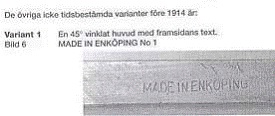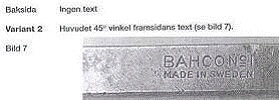 Bruce's Bahco Collections
Bruce's Bahco Collections
Produced in sizes 1, 2, 3, 4, 5 and 6.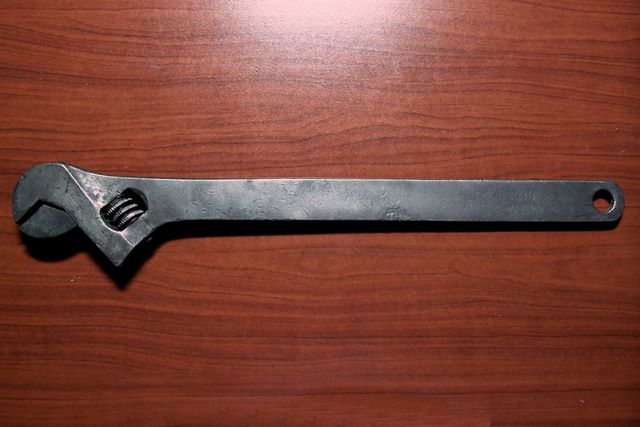
Capacity for the respective size was 20, 25, 37, 45, 60 and 75 mm.
Lengths have varied in directories from the 1800’s .
No. 1 had lengths of 205 mm (8 ") and 150 mm (6") and 165 mm (6½ ")
No. 2 had lengths of 255 mm (10") and 230 mm (9 ")
No. 3 had lengths of 380 mm (15 ") and 305 mm (12")
No. 4 had lengths of 455 mm (18 ") and 385 mm (15")
No. 5 had lengths of 660 mm (26 ") and 510 mm (20")
No. 6 had lengths of 760 mm (30 ") and 615 mm (24")
The wrench is hand forged with a smooth handle, which is slightly broader at the
back end. The head is angled at 45 degrees. Gripping surfaces are hardened. The
set screw has left handed threads. Labeling until 1902 is shown in picture 1 and
2.
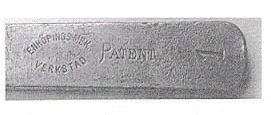
Picture #2
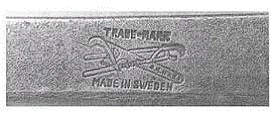
From
1903
when
Enköping
Mekaniska Verkstad converted into a
limited company,
they
changed
the shape
of the shaft,
so
that
it
became
narrower
at
the end
than closer to the head.
The wrenches
were
still
numbered 1-6
with
the same grip
lengths
as
before.
See
above,
No.
1-6.
Between
1903
and
1910
two new
sizes were introduced.
These
were No.
2A
and
4A.
No. 2A
gripping
capacity
32 mm,
length
305 mm
(12
")
No. 4A
gripping
capacity
51 mm,
length
560 mm
(22
")
Marking
shown in
Figure 2
and 3.


Wrenches
1-6
were
produced
between the
years
1910
-1915. They
had
a
handle with
parallel
sides.
Various forms of the label were used during this period.
See figure
6, 7
and 8.
These
were made until
1915
when they were
redesigned and production began of Nos.
81-87.
(see Generation
3)
